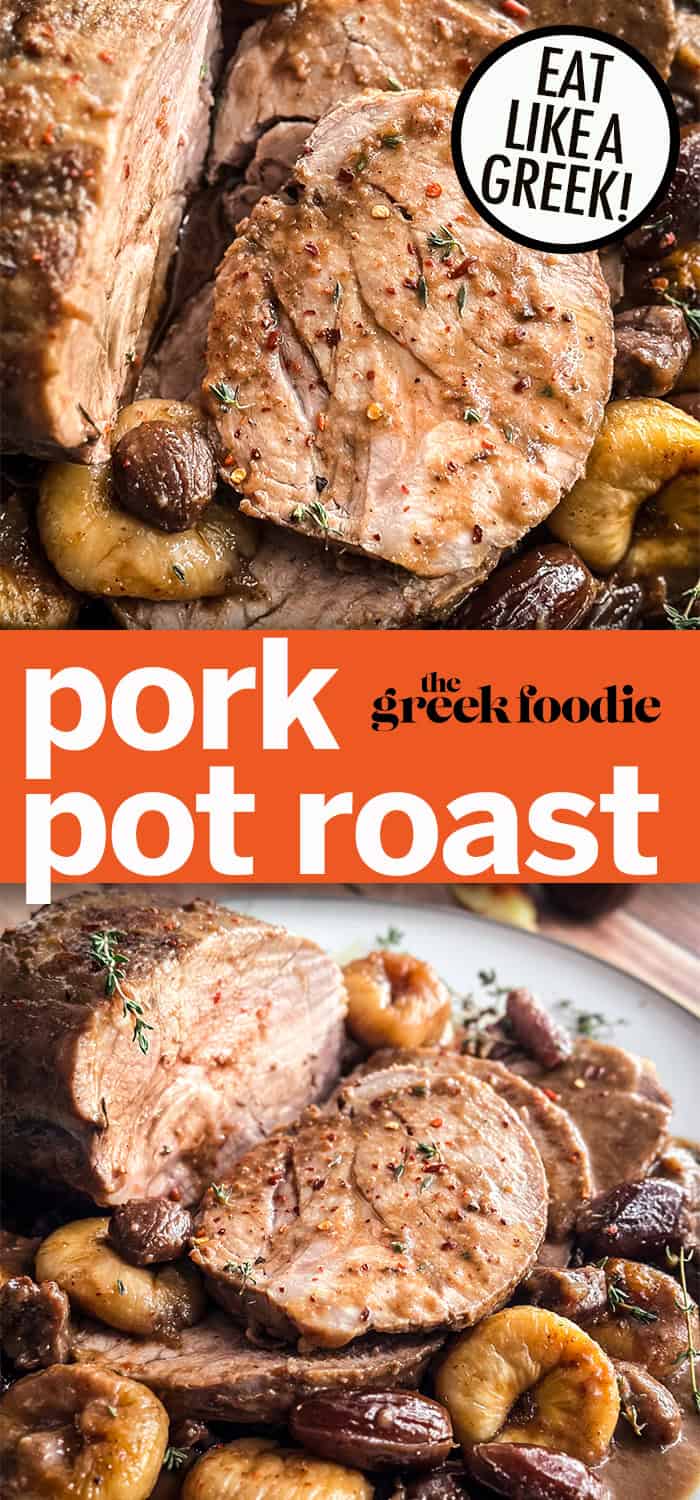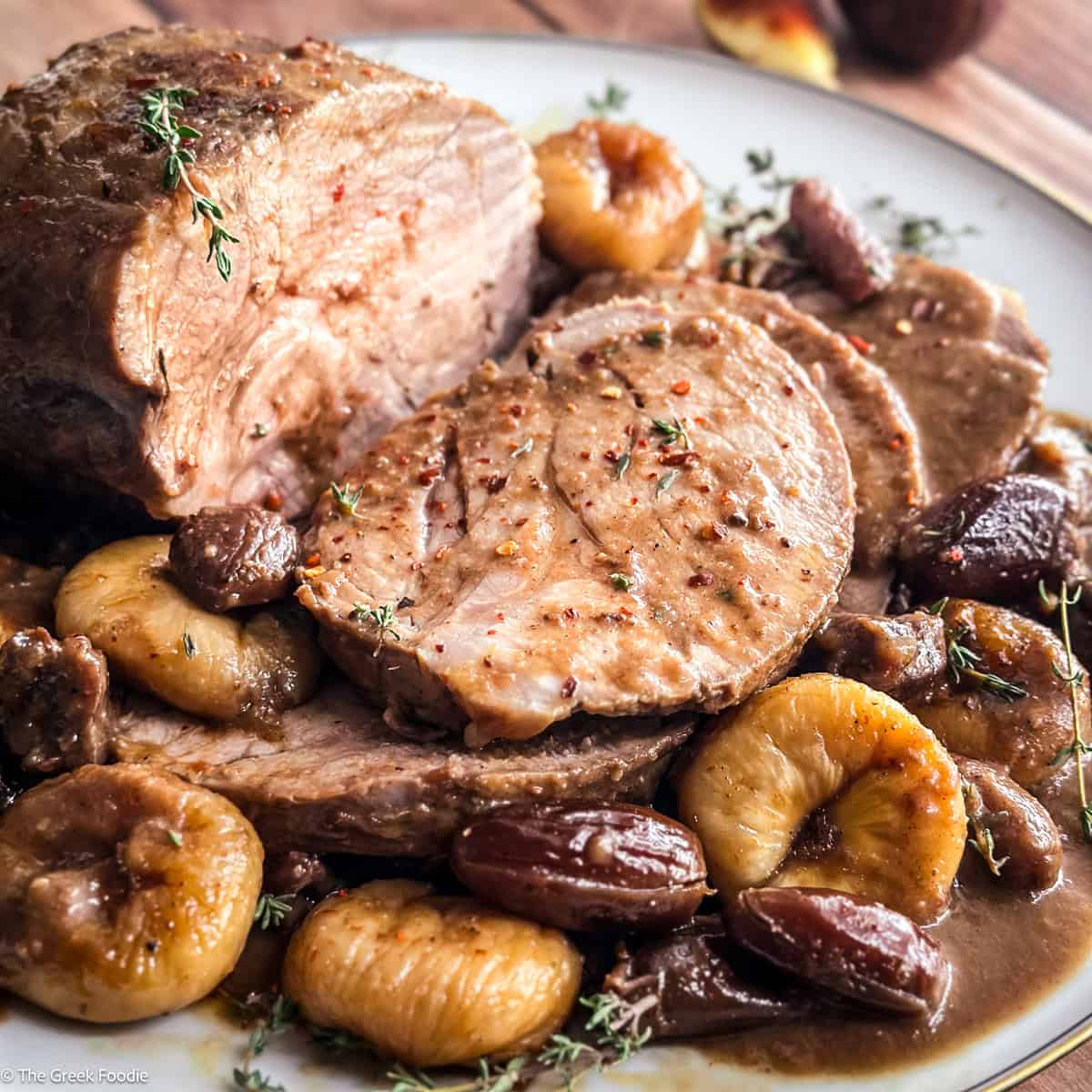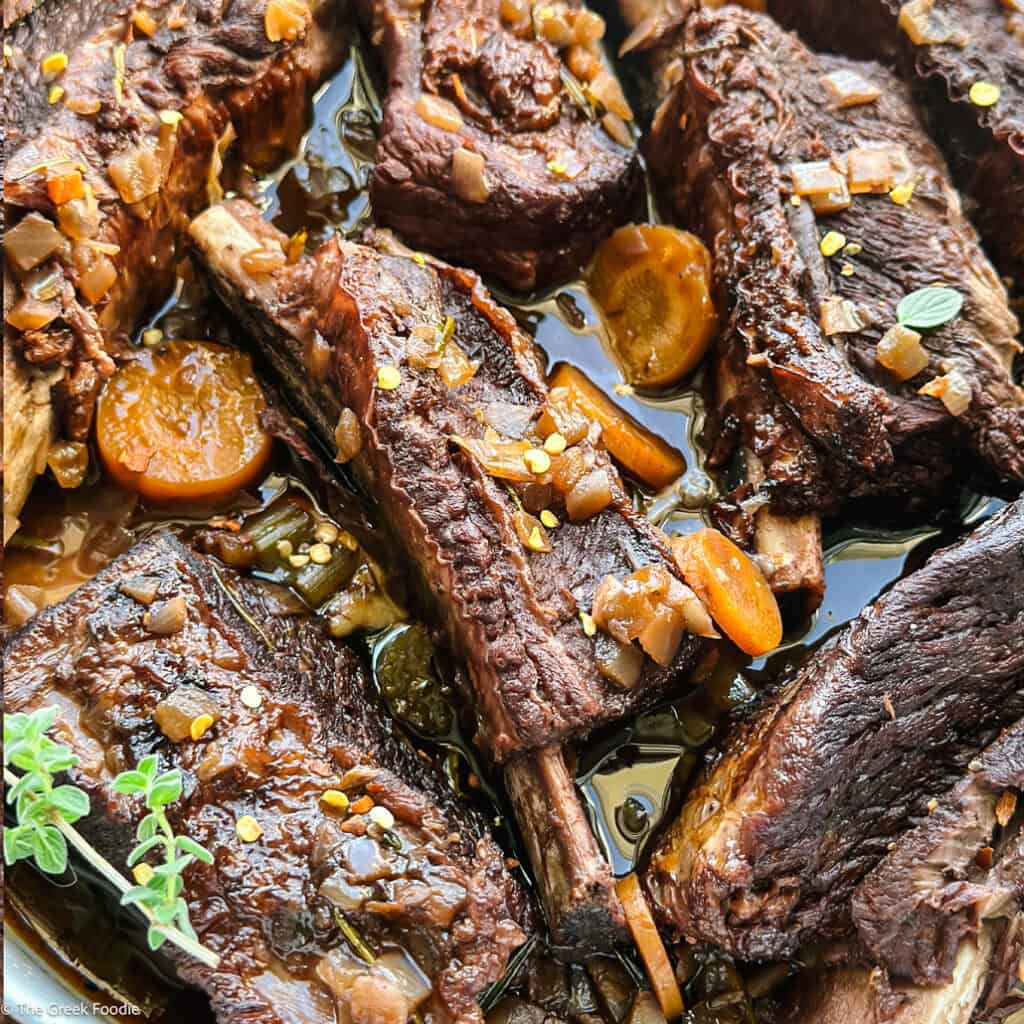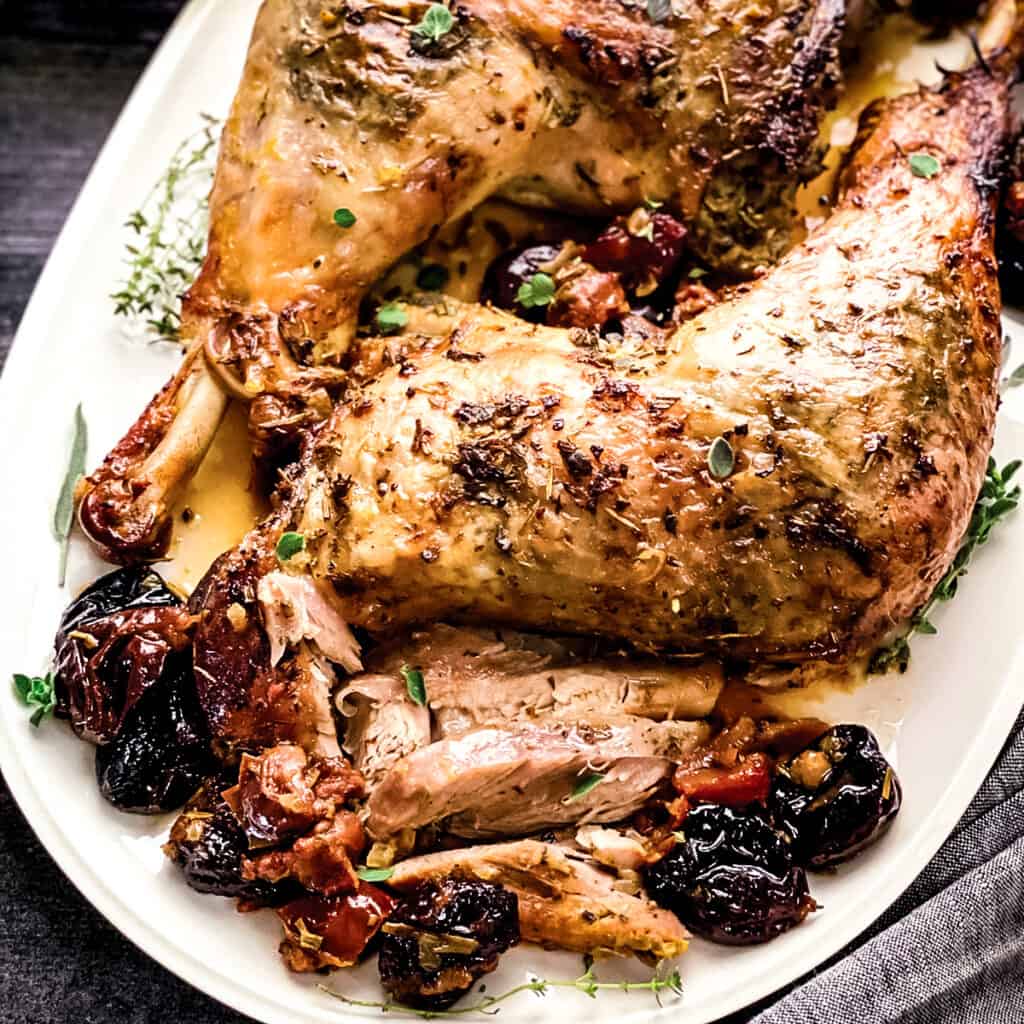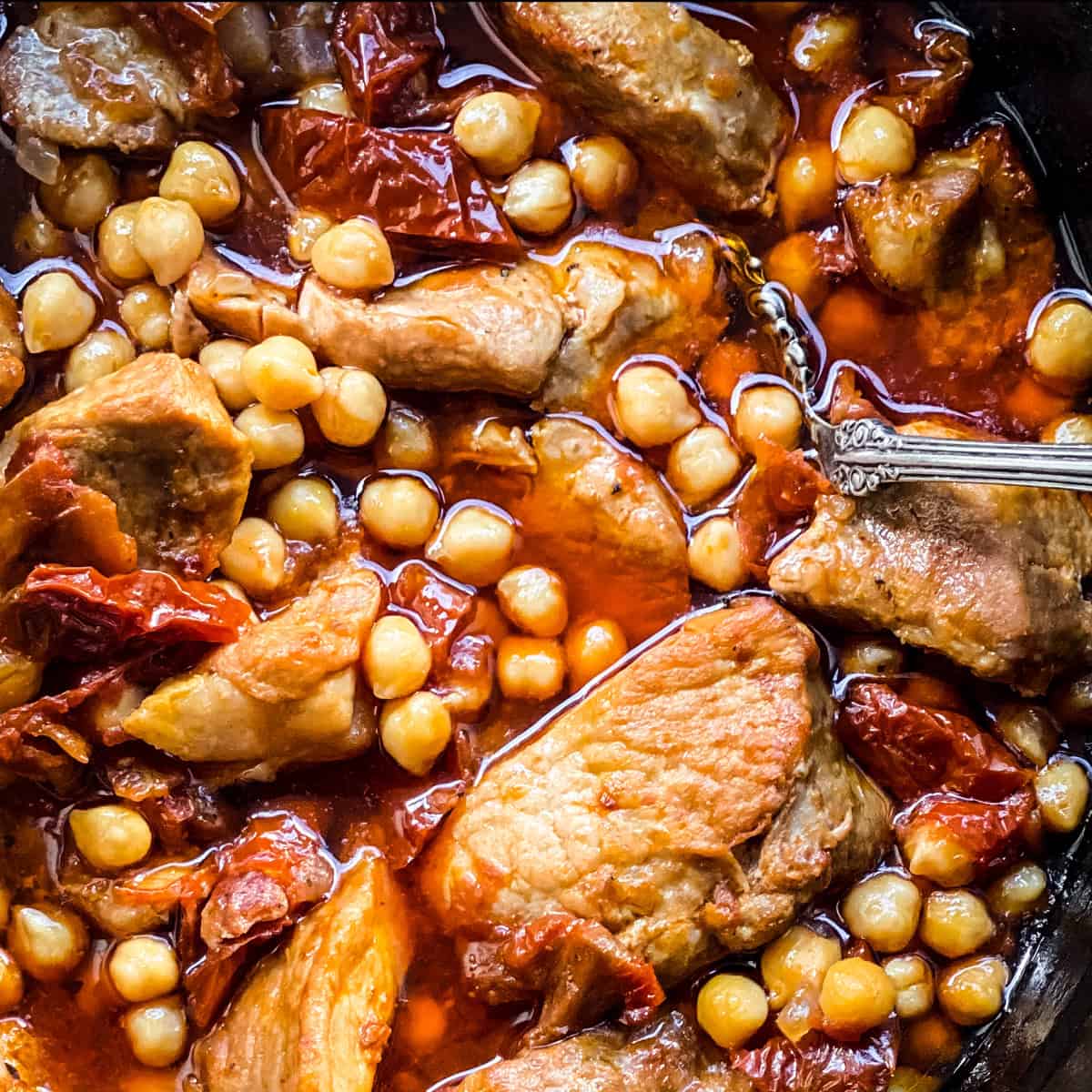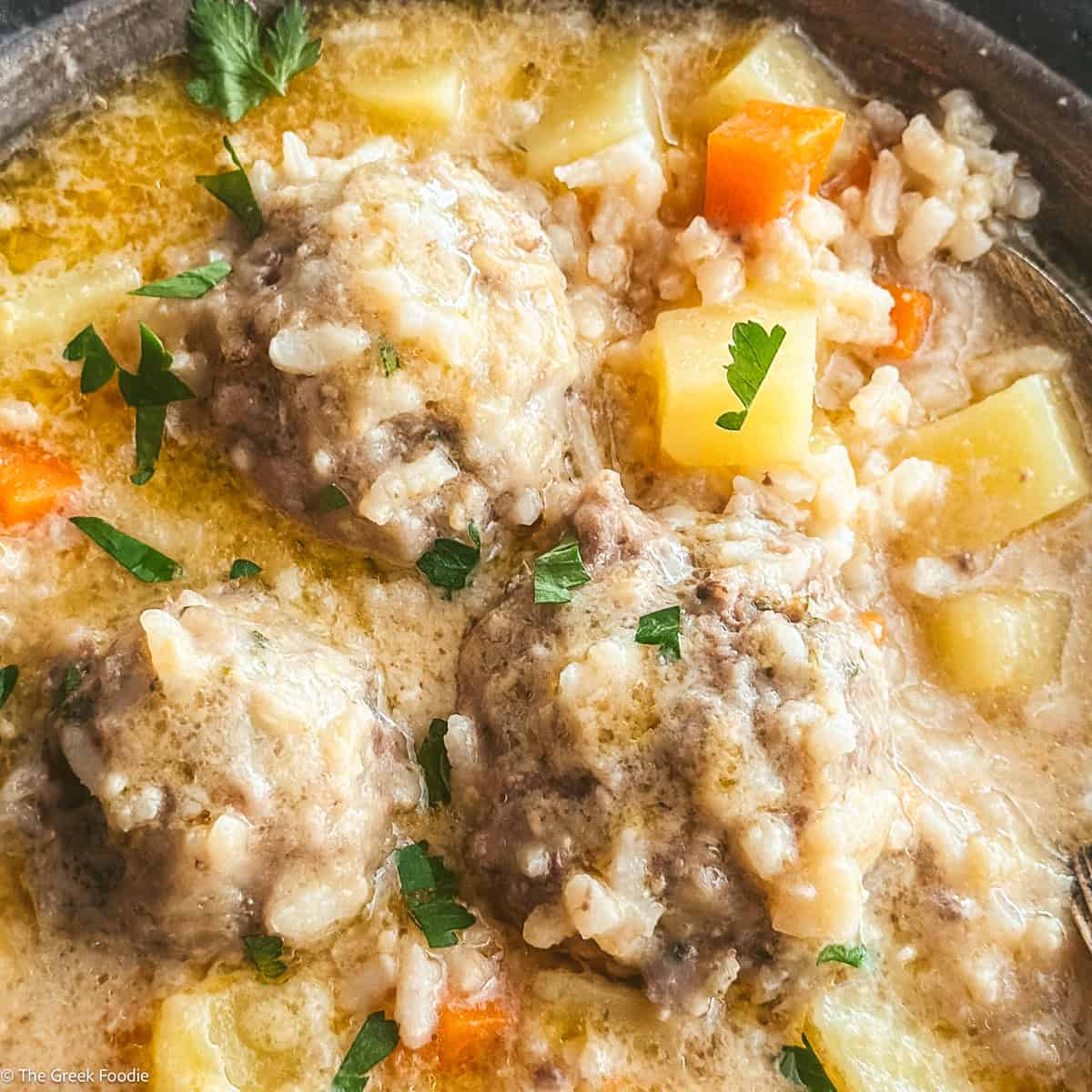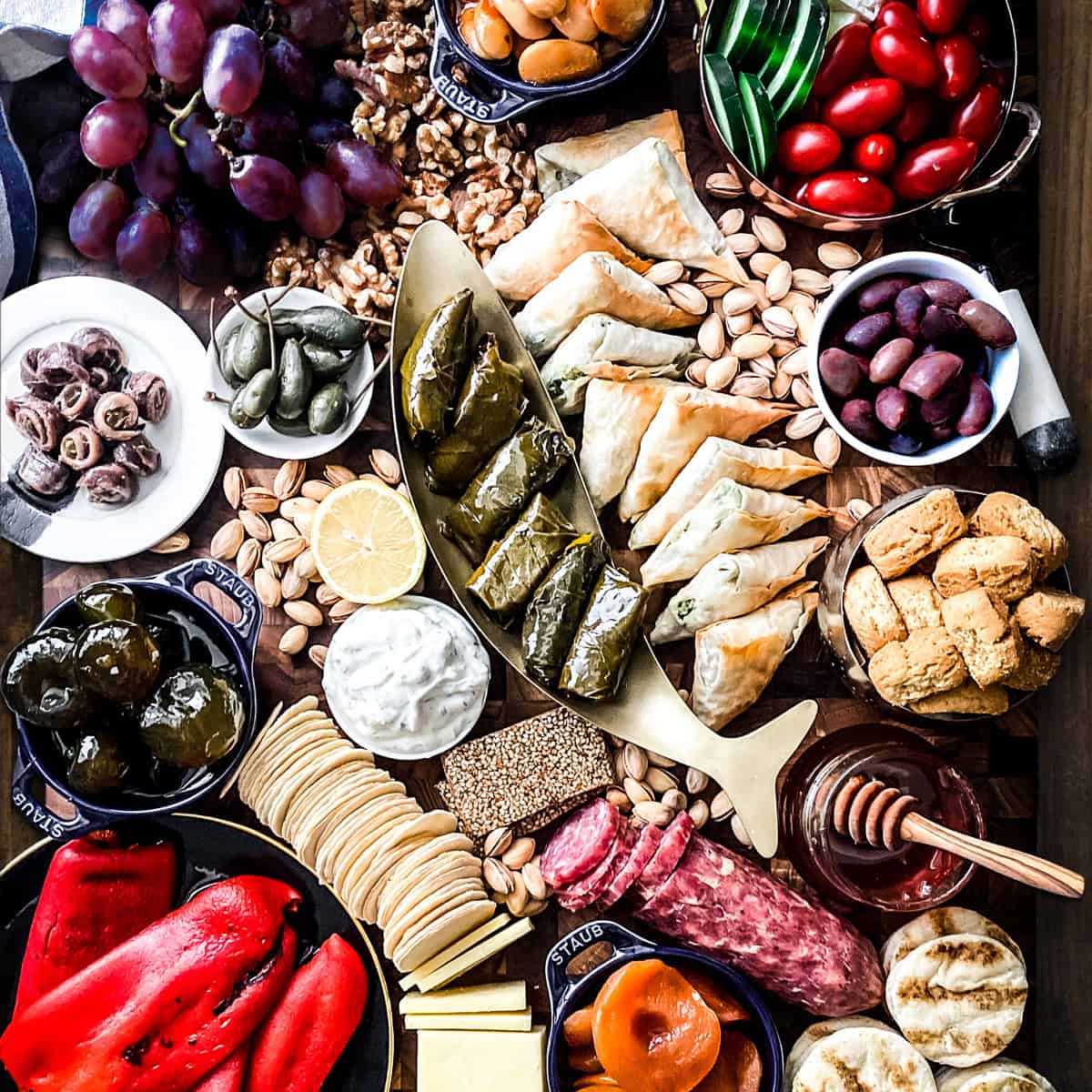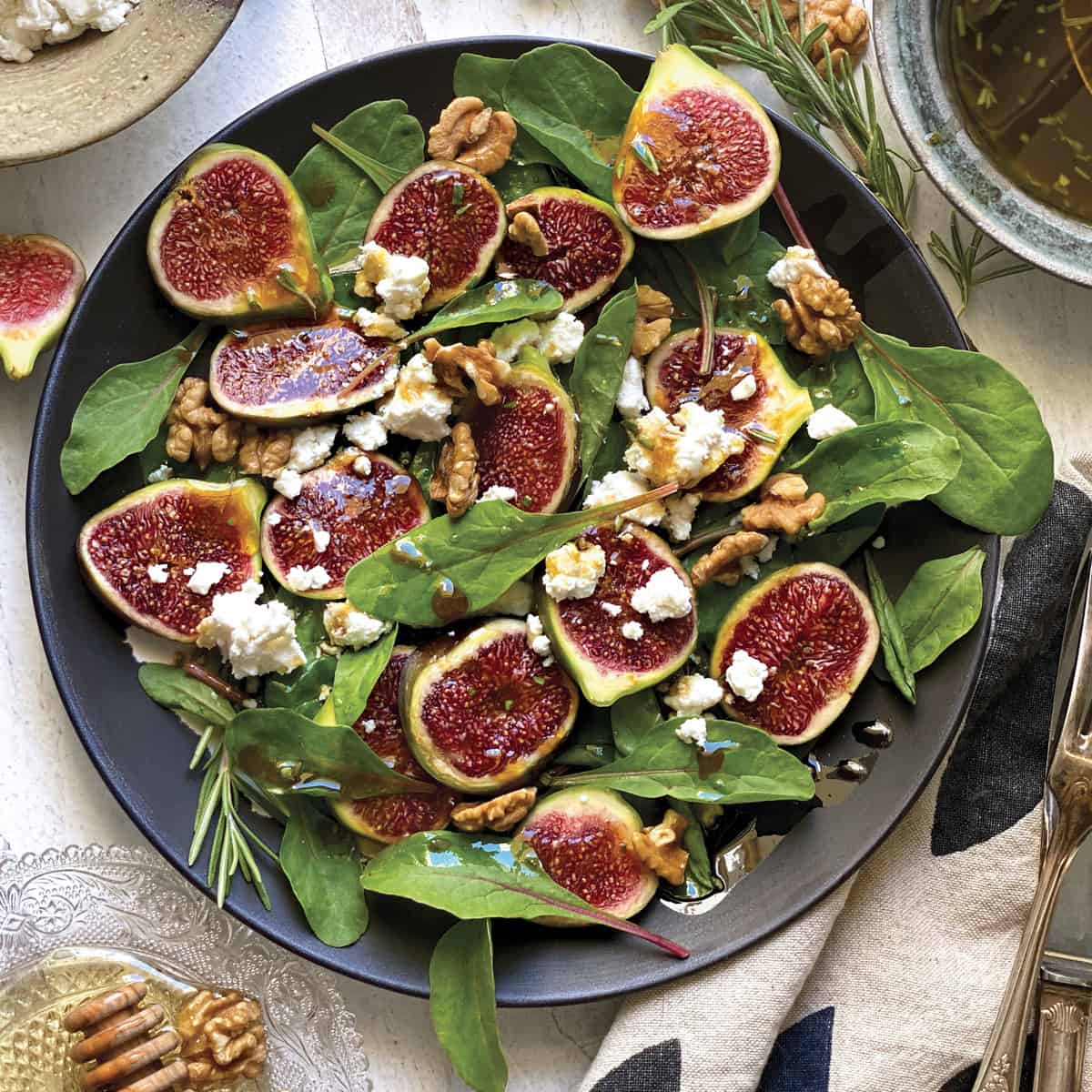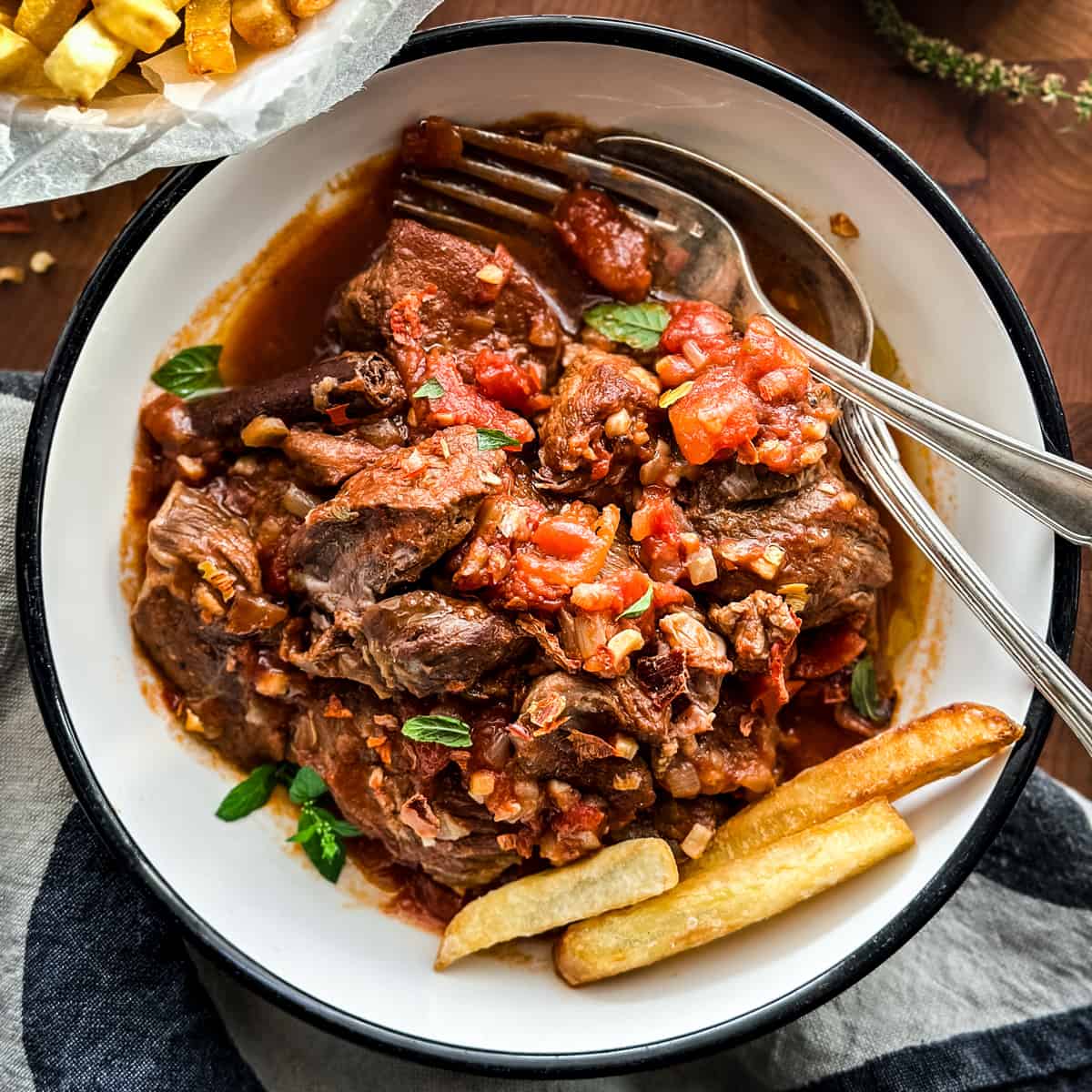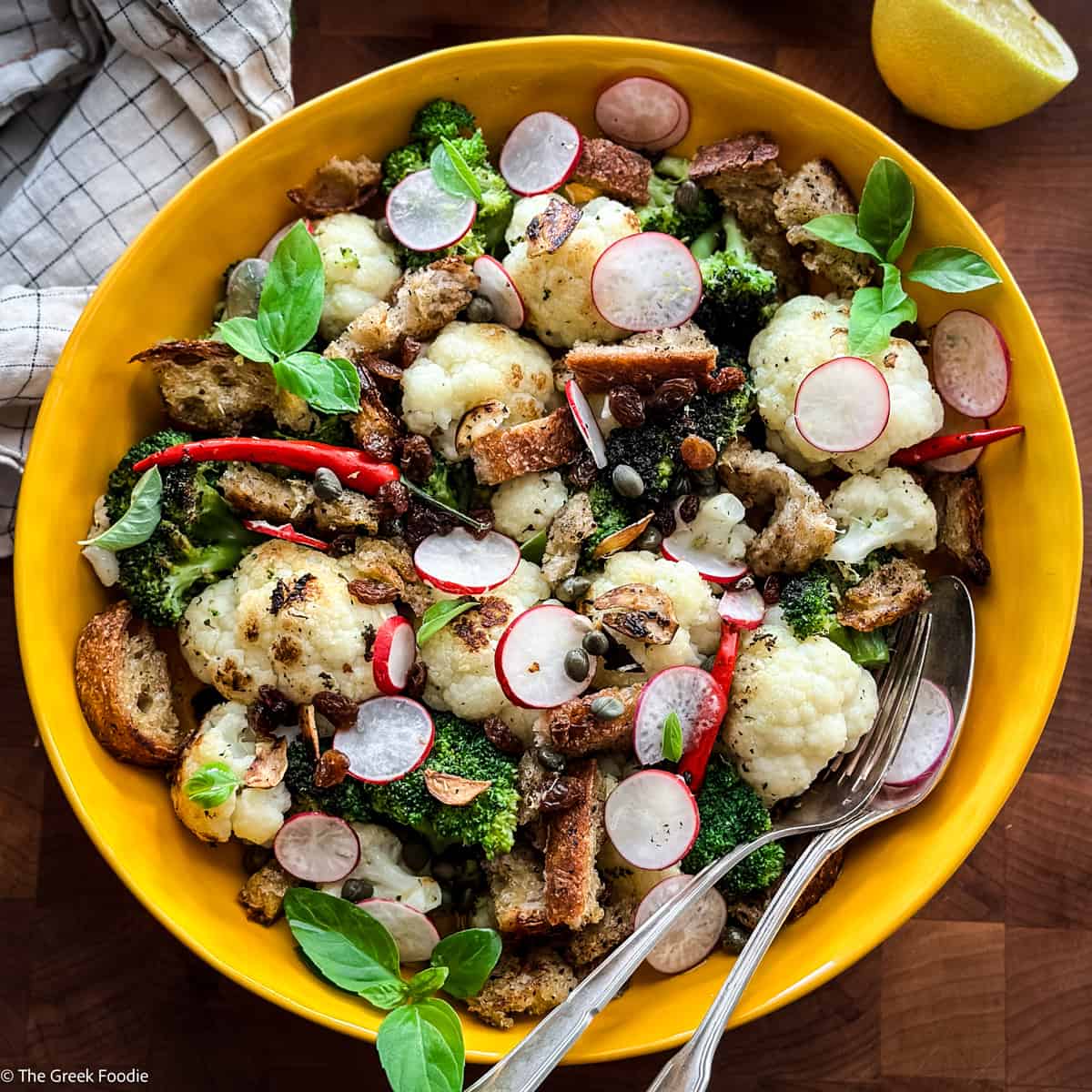This festive pork pot roast with chestnuts, figs, and dates is a showstopper for the holidays. Slow-cooked on the stovetop until tender, it’s infused with a deeply aromatic sauce featuring warm spices and a touch of dark rum for depth and flavor. The result is rich, velvety, and irresistibly comforting — the perfect centerpiece for your Christmas or New Year’s table. Serve it with buttery mashed potatoes for a simple yet unforgettable meal.
Looking for more festive recipe ideas? Start with my easy cheese pie with kataifi pastry and Roquefort, then serve this pork pot roast with chestnuts, figs, and dates as your centerpiece. End your meal with a slice of puff pastry apple pie, the perfect trio for a joyful holiday table.
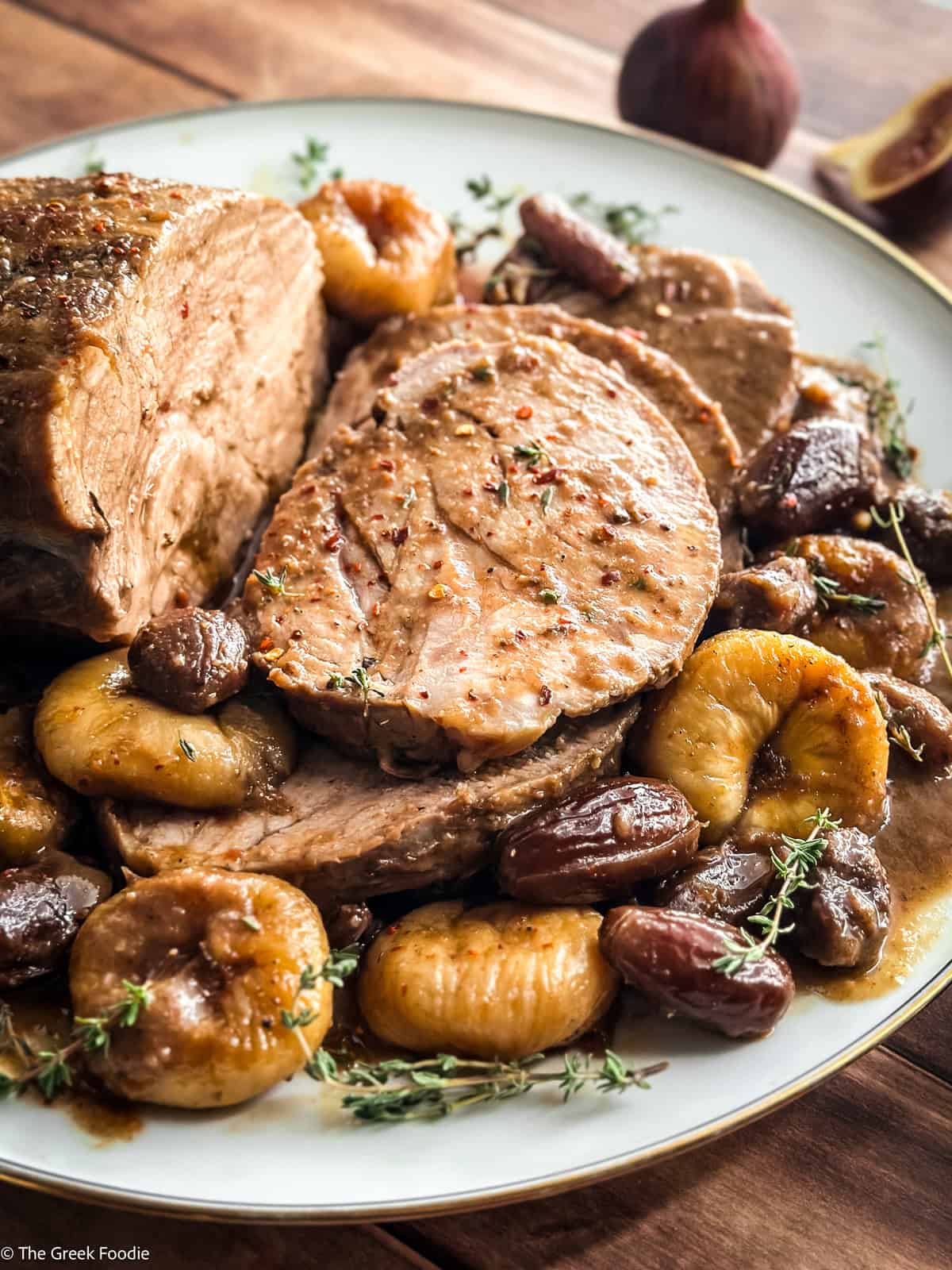
Why you will love our pork pot roast
Here is what you need
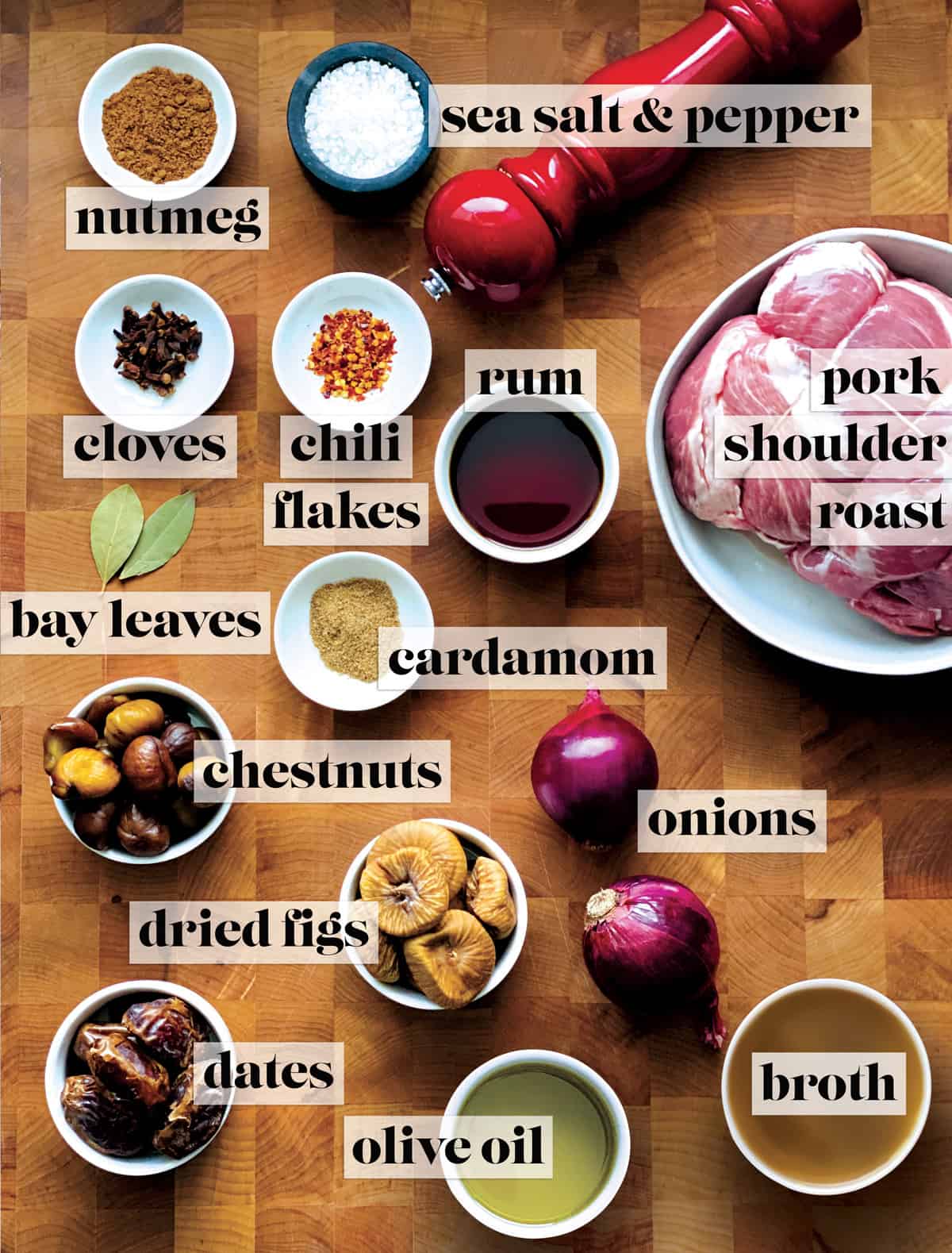
- Pork shoulder (boneless roast) – I always choose a boneless pork shoulder for pot roasts. It’s tender, flavorful, and has just the right amount of fat to stay beautifully moist during slow cooking. Ask your butcher to tie it for you so it keeps its shape as it simmers. If you prefer a bone-in cut, simply allow a little extra cooking time for the meat to become perfectly tender.
- Onions – Red onions are my favorite for their gentle sweetness and vibrant color, but white onions work just as well. You can also use small pearl onions for a more elegant presentation; they look lovely nestled among the fruit and sauce.
- Dried figs – Sweet, jammy, and earthy, figs add depth to the sauce. I especially love sun-dried Kalamata figs for their natural honeyed flavor, though golden California figs are an excellent alternative.
- Dates – Medjool dates are plump, soft, and full of rich caramel notes — perfect for balancing the savory pork and spices.
- Chestnuts – To make life easier, I use ready-to-eat roasted and peeled chestnuts. They add a creamy texture and a delicate nuttiness that ties all the flavors together.
- Spices – Nutmeg, cardamom, cloves, bay leaves, and a pinch of chili flakes create a warm and aromatic base. Together, they fill the kitchen with the most comforting holiday scent.
- Olive oil, sea salt & pepper – Use good extra virgin olive oil; it enhances the sauce’s depth and complements the natural sweetness of the dried fruit.
- Broth – Both chicken and vegetable broth work beautifully. Choose whichever you prefer; either will enrich the sauce and keep the pork tender.
- Aromatic touch (optional) – A small splash of dark rum (or a non-alcoholic substitute like apple or white grape juice) adds a wonderful depth of flavor and aroma to the sauce. See the recipe notes for substitution tips.
Step by step
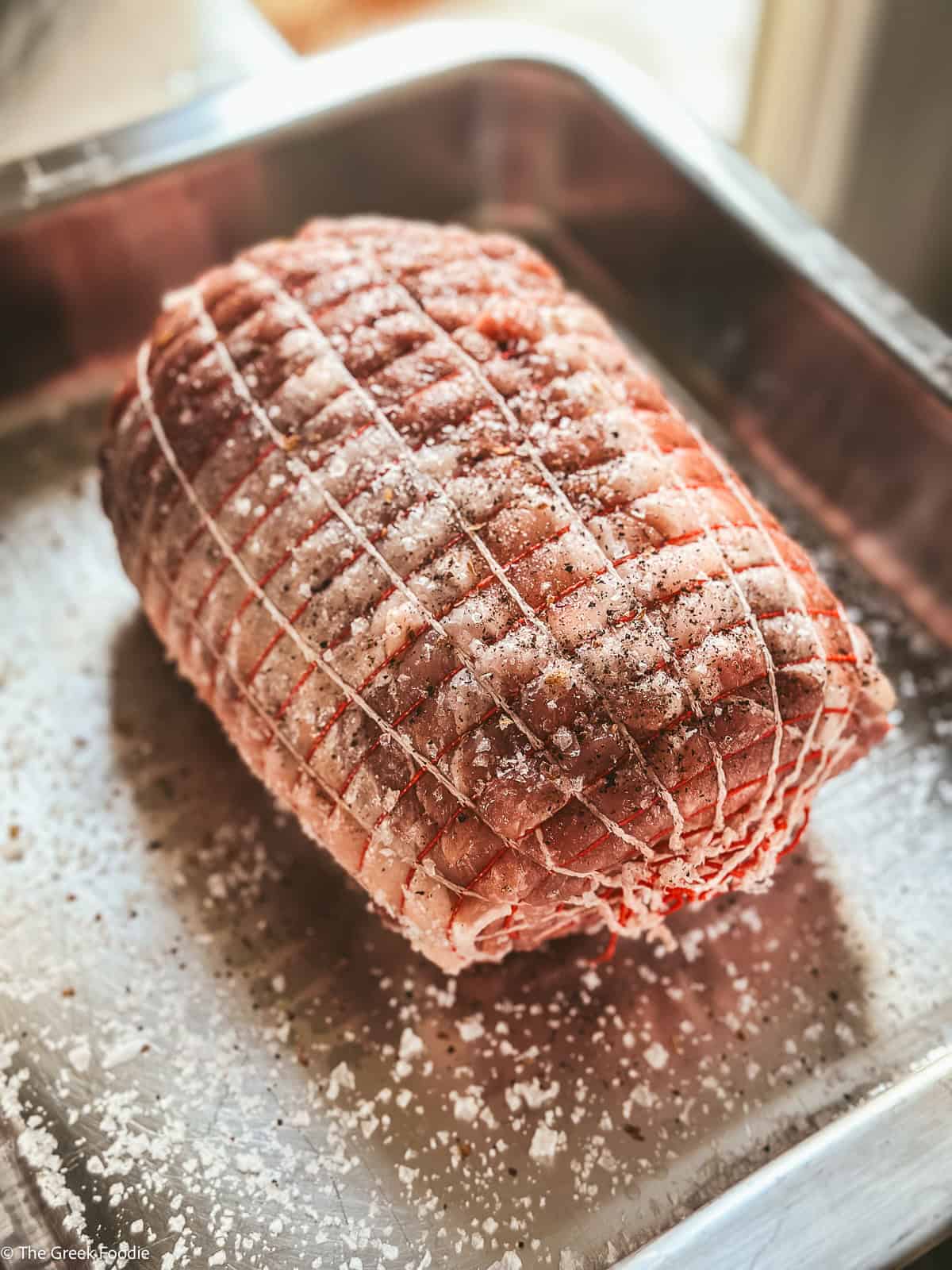
Step 1 – Prepare the pork
Season the pork shoulder generously with sea salt and freshly ground pepper on all sides. Let it rest at room temperature for about an hour so the meat cooks more evenly later.
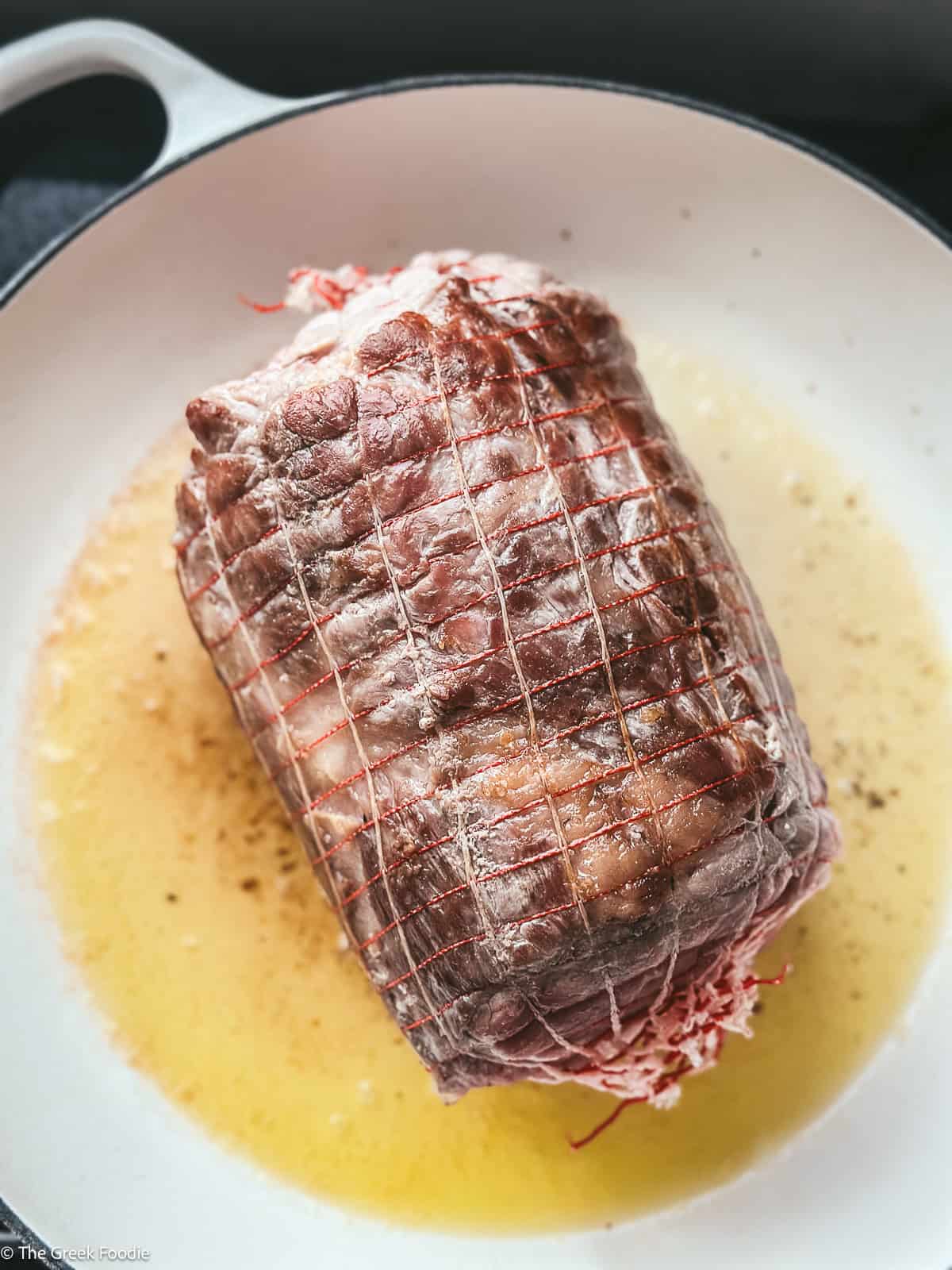
Step 2 – Sear for flavor
In a large, heavy pot, heat two tablespoons of olive oil over medium-high heat. Sear the pork for about 6–7 minutes, turning to brown it evenly on all sides. This step adds a deep, caramelized flavor to the finished roast.
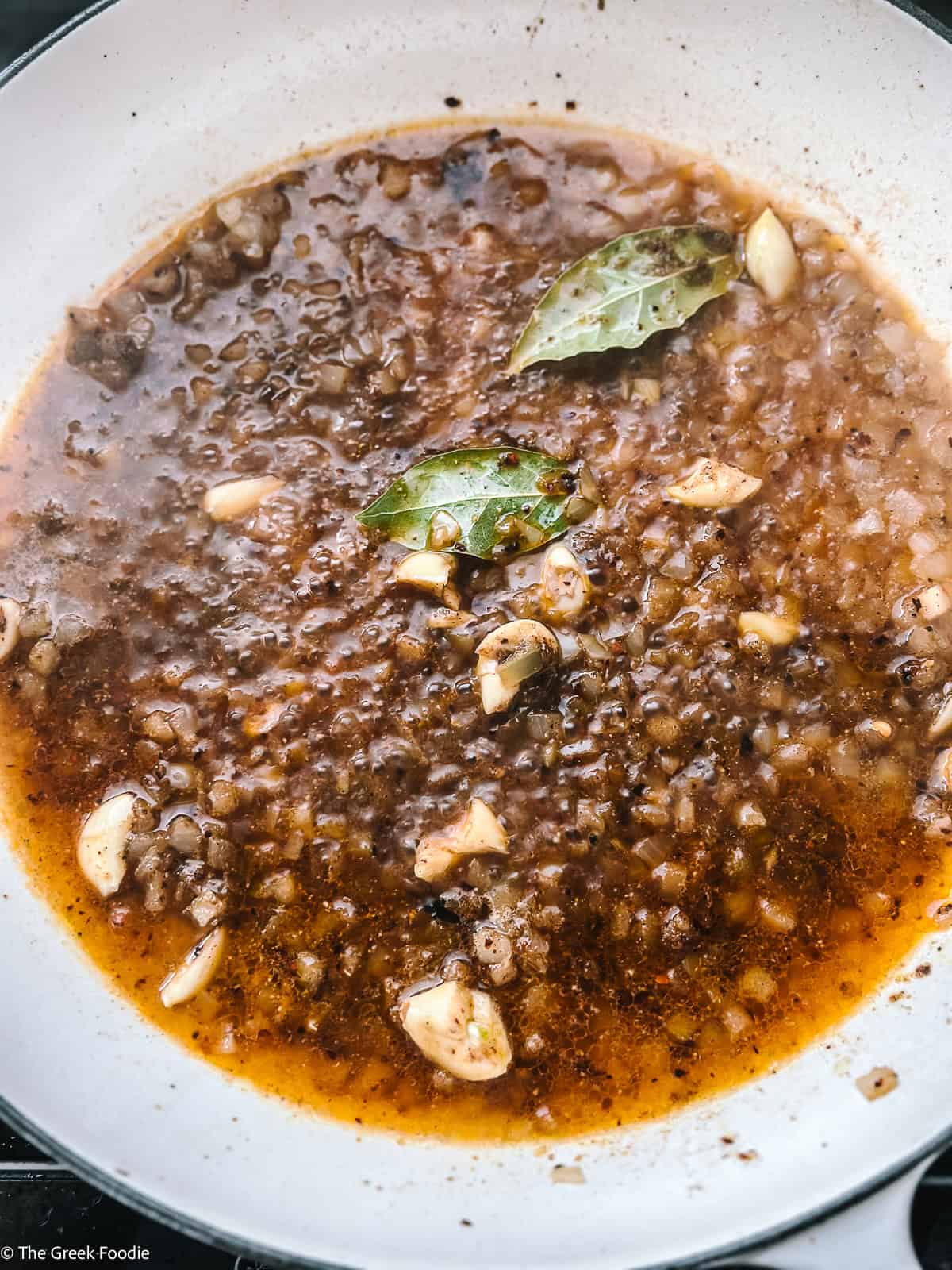
Step 3 – Build the base
Transfer the pork to a plate and stir in the spices, bay leaves, garlic cloves, and diced onions. Sauté gently for 2–3 minutes until fragrant. Cook for one to two minutes stirring, then add the dark rum (or apple or grape juice for a non-alcoholic option) and let it simmer briefly so the liquid reduces slightly and releases its aroma.
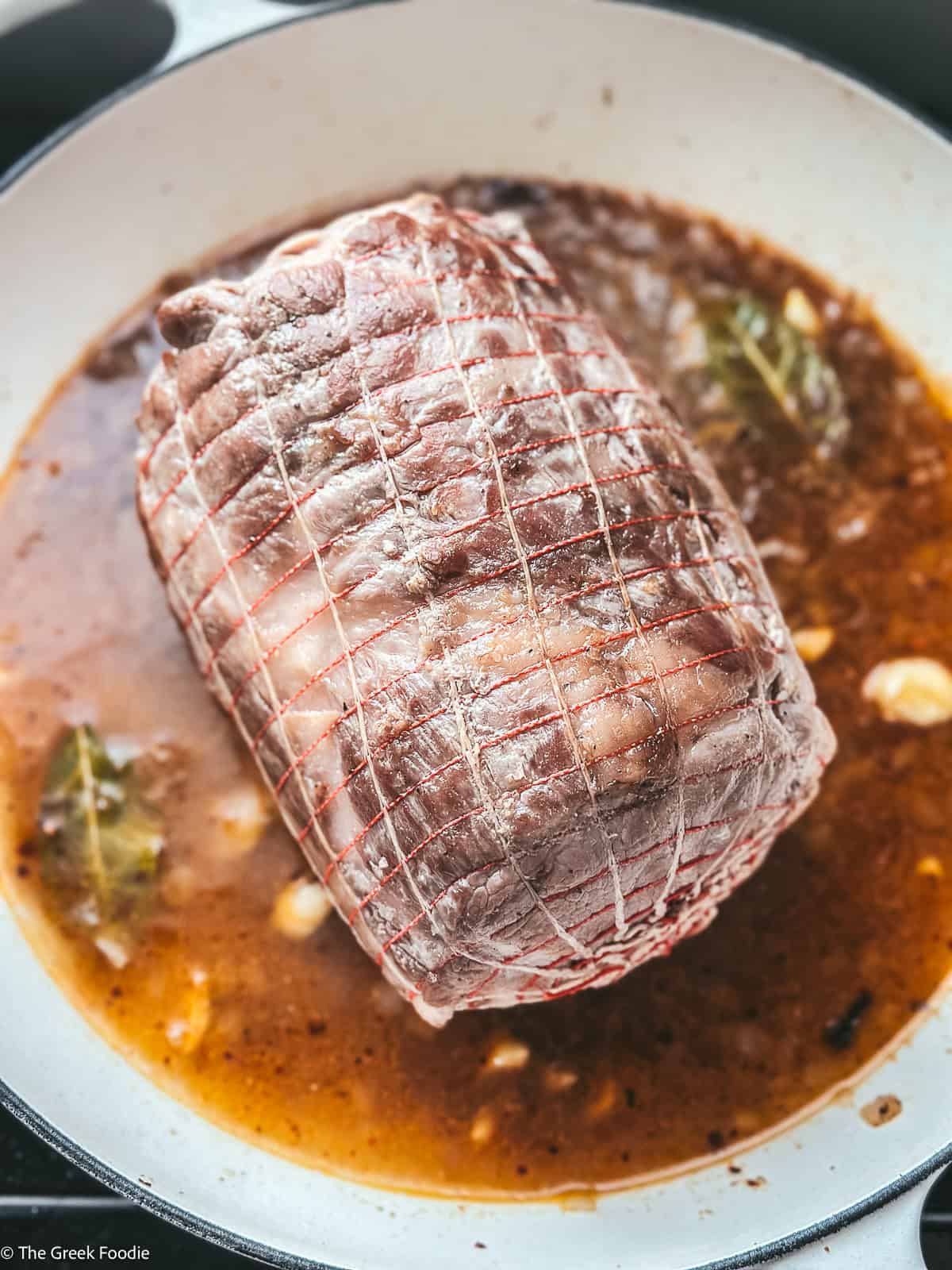
Step 4 – Slow cook to perfection
Return the pork to the pot. Pour in the broth and bring everything to a gentle boil. Lower the heat, cover the pot, and let the pork cook slowly for about 1½ hours, or until it becomes tender and easy to pierce with a fork.
Stir in the dried figs, dates, and roasted chestnuts. Continue cooking over very low heat for another 30 minutes, allowing the sauce to thicken and the flavors to meld beautifully.
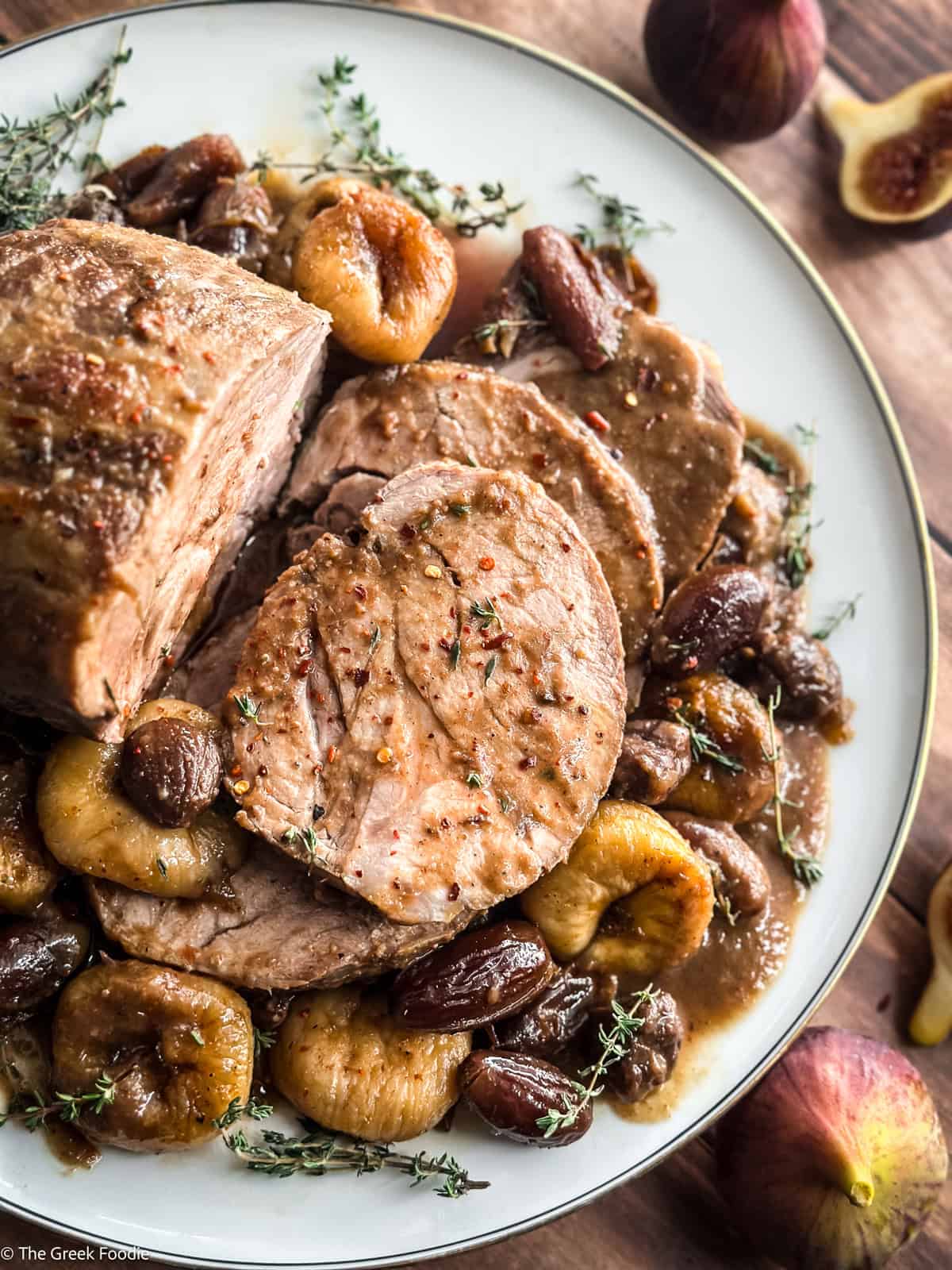
Step 5 – Serve Carefully transfer the pork, fruit, and chestnuts onto a warm serving platter. Strain or ladle the sauce into a gravy boat and serve alongside. It’s terrific with mashed potatoes, roasted vegetables, or even simple rice.

FAQs about pork pot roast
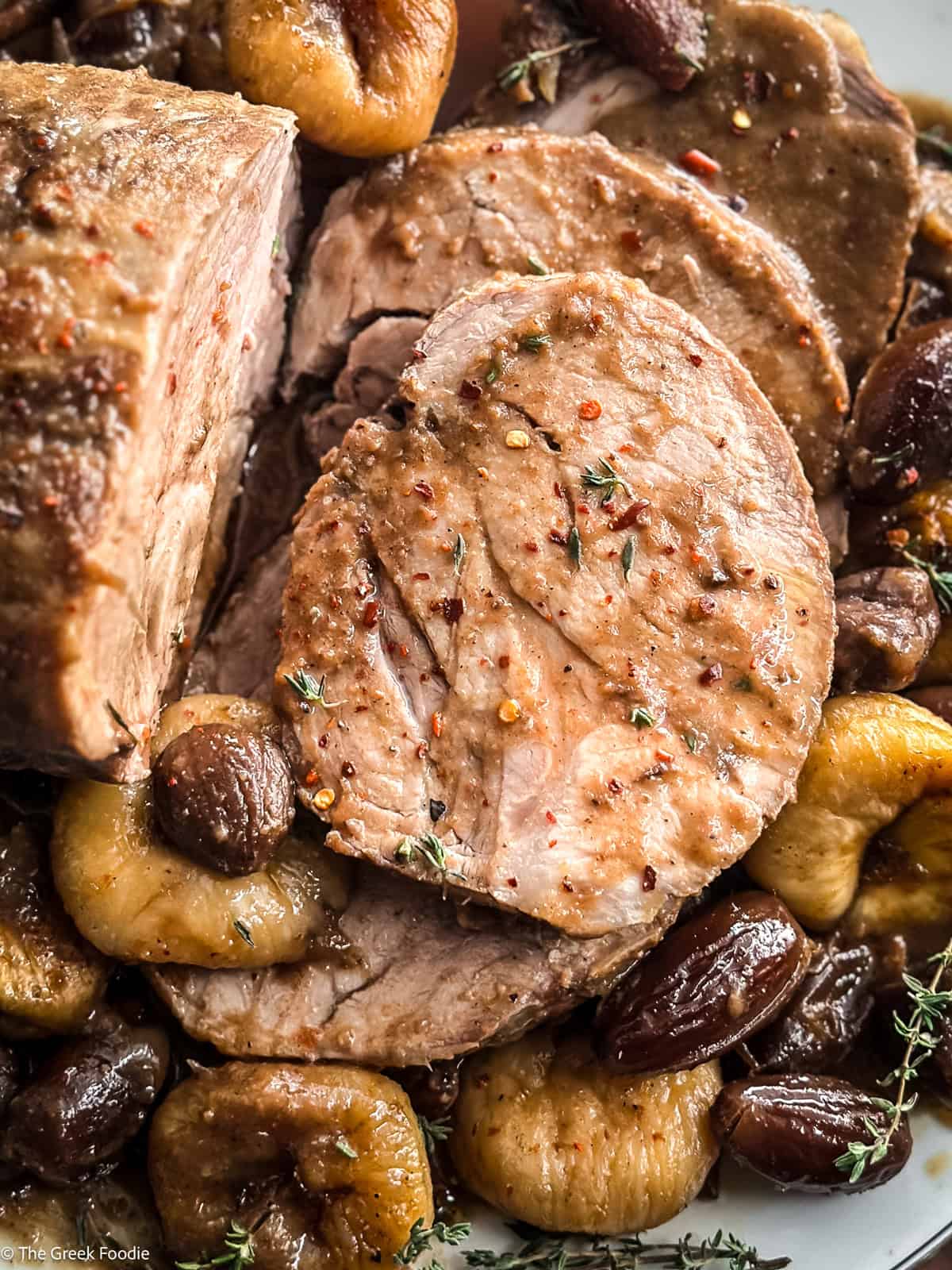
Serving Suggestions
This pork pot roast with chestnuts, figs, and dates deserves sides that are just as comforting and full of flavor. These Greek-inspired favorites complement its rich, aromatic sauce beautifully:
- Creamy mashed potatoes – Perfect for soaking up every drop of that luscious sauce.
- Roasted lemon potatoes – A bright, citrusy contrast that lifts the dish and adds a touch of sunshine to your table.
- Greek rice pilaf (pilafi) – Light yet full of Mediterranean flavor, this rice is a colorful, rustic side that pairs wonderfully with the roast.
- Country bread or olive oil oregano bread – Ideal for dipping into the sauce — it’s impossible to resist.
- Maroulosalata (Greek green salad) – Crisp and refreshing, it balances the richness of the pork and brings freshness to the meal.
- Traditional cheese pie (tiropita) – A festive touch that makes any holiday menu feel complete.
Wine & Drink Pairing
- This pork pot roast pairs beautifully with a medium-bodied dry red wine — something with soft tannins that complements the sweet, rich notes of the chestnuts and dried fruit. A Merlot, Xinomavro, or Grenache blend works perfectly.
- For a non-alcoholic option, try a sparkling pomegranate or grape juice served in wine glasses for a festive touch. Both balance the dish’s depth and make your holiday table shine.
Storage and reheating
- Refrigerate: Store leftovers in an airtight container in the fridge for up to 3 days.
- Reheat: Warm gently in a covered pot over low heat, adding a splash of broth or water to loosen the sauce.
- Freeze: You can freeze the pork (sliced or shredded) with some sauce in freezer-safe containers for up to 3 months. Defrost overnight in the fridge before reheating.
This recipe was originally published in December 2021 and updated in October 2025 with new content and photos. The delicious original Pork Pot Roast recipe remains unchanged. Enjoy!

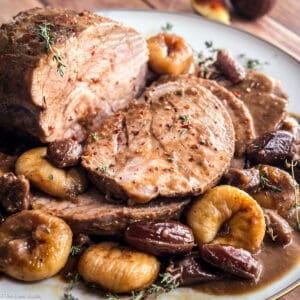
Pork Pot Roast with Chestnuts, Figs And Dates
Equipment
- Thick bottom large pot or dutch oven
- Meat thermometer
Ingredients
- 3 lbs pork shoulder roast boneless
- 2 tablespoons extra virgin olive oil
- 1 cup onions diced
- 2 bay leaves
- 1 teaspoon ground cardamom
- 1 teaspoon ground nutmeg
- 3-4 cloves
- 1 teaspoon chili pepper flakes
- 4 garlic cloves crushed and roughly chopped
- ⅔ cup dark rum or brandy or apple or grape juice for a non-alcoholic option
- 1 cup Medjool dates pitted
- 1 cup chestnuts cooked, whole
- 1 cup dried figs
- 1 cup organic broth chicken or vegetable
- sea salt
- freshly ground pepper
Instructions
- Season the pork shoulder generously with sea salt and freshly ground pepper on all sides. Let it rest at room temperature for about an hour.
- In a large, heavy pot, heat two tablespoons of olive oil over medium-high heat. Sear the pork for about 6–7 minutes, turning to brown it evenly on all sides.
- Transfer the pork to a plate and stir in the spices, bay leaves, garlic cloves, and diced onions. Sauté gently for 2–3 minutes until fragrant. Add the dark rum (or apple or grape juice for a non-alcoholic option) and let it simmer briefly so the liquid reduces slightly and releases its aroma.
- Return the pork to the pot. Pour in the broth and bring everything to a gentle boil. Lower the heat, cover the pot, and let the pork cook slowly for about 1½ to 2 hours, or until it becomes tender and easy to pierce with a fork.Stir in the dried figs, dates, and roasted chestnuts. Continue cooking over very low heat for another 30 minutes, allowing the sauce to thicken and the flavors to meld beautifully.
Notes
Nutrition
